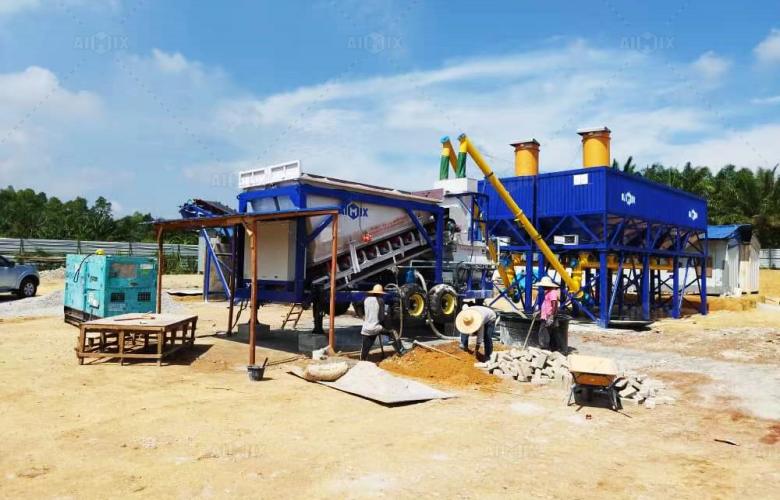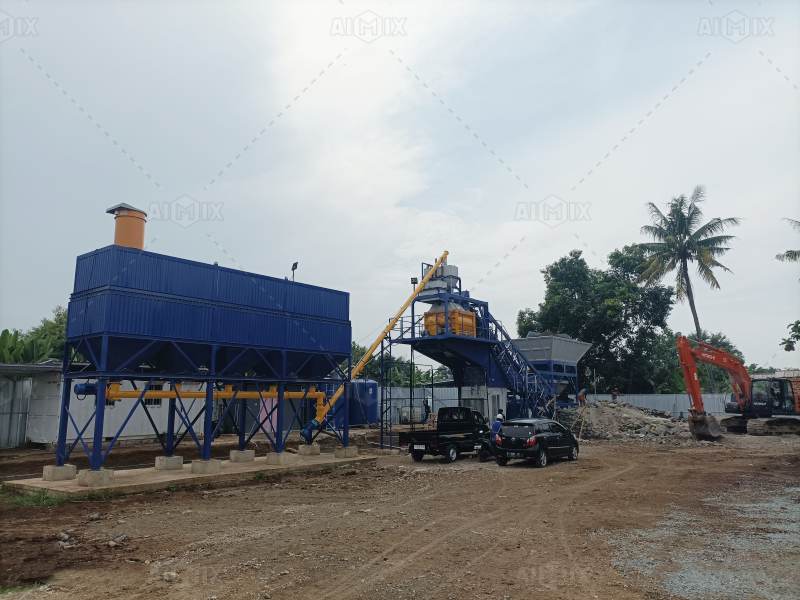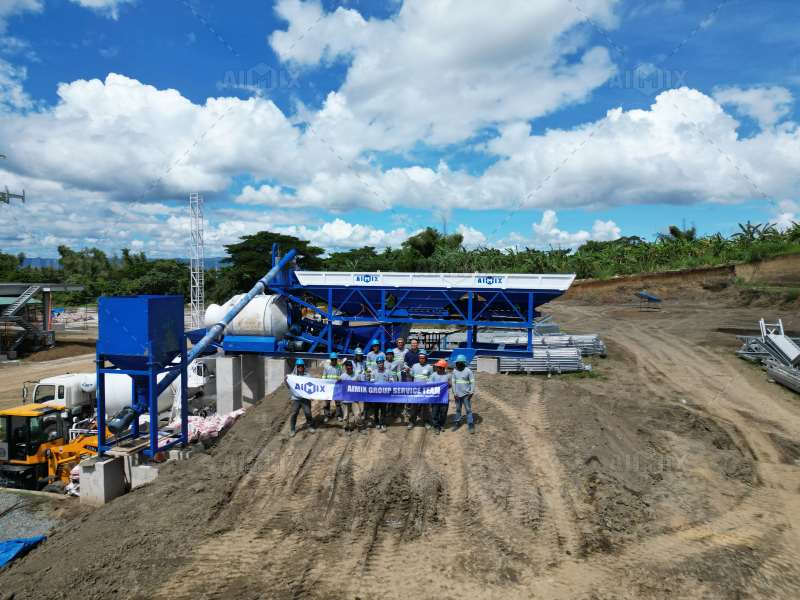In today’s fast-evolving construction industry, sustainability and efficiency are at the forefront of every project. With growing concerns over environmental impact and the rising costs of raw materials, contractors are increasingly seeking solutions that help minimize waste, reduce carbon footprints, and enhance overall project performance. One such solution is the use of portable concrete plants, which have become a popular choice in both small and large-scale construction projects. By optimizing the production process and utilizing advanced technology, portable plants, such as small concrete batching plants, mobile concrete batching plants, and concrete batching plants for sale, contribute significantly to a more sustainable construction industry.

Understanding Portable Concrete Plants
A portable concrete plant is a mobile facility that combines various materials like cement, water, aggregates, and additives to produce concrete. These plants are designed for flexibility, allowing them to be relocated quickly from one site to another. Unlike traditional stationary concrete batching plants, portable plants are equipped with the capability to produce on-site concrete, making them especially useful for projects in remote locations or where quick setup and rapid production are needed.
The main types of portable concrete plants include:
Small Concrete Batching Plants: Compact and ideal for small to medium-scale projects, offering the ability to produce a limited amount of concrete.
Mobile Concrete Batching Plants: These plants offer full-scale production capabilities and can be moved from one job site to another with ease.
Concrete Batching Plants for Sale: Available for purchase, these plants can be configured to meet the specific needs of the buyer, offering a long-term, cost-effective solution.
These types of portable plants are designed with sustainability in mind, helping to minimize environmental impact through various innovations.

Reducing Material Waste
One of the significant advantages of portable concrete plants is their ability to reduce material waste. Traditional concrete production often results in excess materials, either due to inaccurate batching, over-ordering of concrete, or transportation issues. Here’s how portable concrete plants address these challenges:
1. On-Site Concrete Production
Portable concrete plants, such as mobile concrete batching plants, allow for on-site production of concrete. This eliminates the need for transporting ready-mix concrete from distant plants, which often leads to wastage due to time delays or inaccurate estimations. By producing concrete directly at the construction site, the plant can meet the exact requirements of the project, ensuring there is no overproduction.
2. Precise Batching Systems
Both small concrete batching plants and mobile concrete batching plants feature advanced batching systems that ensure precise measurements of raw materials. By accurately measuring each component, these plants minimize the risk of overusing cement, aggregates, or water. This precision reduces material waste and leads to cost savings, as there’s less need for excess concrete or the disposal of unused materials.
3. Customization to Project Needs
Portable plants are customizable to suit specific project requirements. For example, a small concrete batching plant can be calibrated to produce smaller batches, ensuring that only the exact amount of concrete needed is mixed. This is particularly useful for smaller-scale projects, where minimizing waste is crucial. By adjusting the batch size according to demand, contractors can avoid the unnecessary wastage of materials.
Reducing Carbon Footprint
In addition to minimizing material waste, portable concrete plants play a vital role in reducing the carbon footprint of construction projects. The environmental impact of concrete production is significant, particularly when it comes to the energy consumed during transportation and production. Here’s how portable concrete plants help lower carbon emissions:
1. Reduced Transportation Emissions
One of the largest contributors to carbon emissions in traditional concrete production is the transportation of ready-mix concrete. Concrete is often transported in large trucks over long distances, which contributes to high fuel consumption and greenhouse gas emissions. By using mobile concrete batching plants, contractors can produce concrete directly at the job site, cutting down on the need for transportation. This leads to a reduction in both fuel consumption and emissions, making the entire process more eco-friendly.
2. Energy Efficiency in Plant Operations
Modern mobile concrete batching plants are designed with energy-efficient technologies that help reduce overall power consumption. From low-energy mixers to solar-powered systems for powering plant operations, these plants are built to minimize energy use. Some plants also incorporate regenerative energy systems that reuse energy from the mixing process, further reducing the plant’s carbon footprint.
3. Sustainable Material Usage
Portable concrete plants are increasingly being equipped to handle recycled materials. For example, aggregates that would typically be discarded as waste can be recycled and reused in the production of new concrete. This helps reduce the demand for raw materials and decreases the environmental impact associated with extracting them. Some plants also use alternative, eco-friendly binders instead of traditional cement, further contributing to sustainability.

Advantages of Portable Concrete Plants in Sustainability
Aside from reducing material waste and carbon footprint, portable concrete plants offer several other sustainability benefits:
1. Water Recycling
Many portable plants, including small concrete batching plants, are equipped with water recycling systems. These systems collect and filter the water used in concrete production, allowing it to be reused in subsequent batches. By recycling water, these plants significantly reduce water consumption, contributing to overall sustainability.
2. Modular and Scalable
Portable plants are often modular and scalable, meaning they can be easily adapted to suit various project sizes. A mobile concrete batching plant can be expanded to meet higher demand as the project progresses or downscaled if less production is needed. This flexibility ensures that the plant is only using the resources it requires for the specific project, minimizing waste.
3. Cost Efficiency
By reducing material waste, transportation costs, and energy consumption, portable concrete plants offer a cost-effective solution for contractors. This not only makes them an environmentally friendly choice but also a smart investment for any construction business.
Conclusion
Portable concrete plants, including small concrete batching plants, mobile concrete batching plants, and concrete batching plants for sale, represent a significant step toward more sustainable construction practices. By reducing material waste, cutting down on transportation emissions, and offering energy-efficient solutions, these plants help minimize the environmental impact of concrete production. As the demand for sustainable construction continues to grow, portable concrete plants will play an increasingly vital role in meeting both economic and environmental goals in the construction industry.